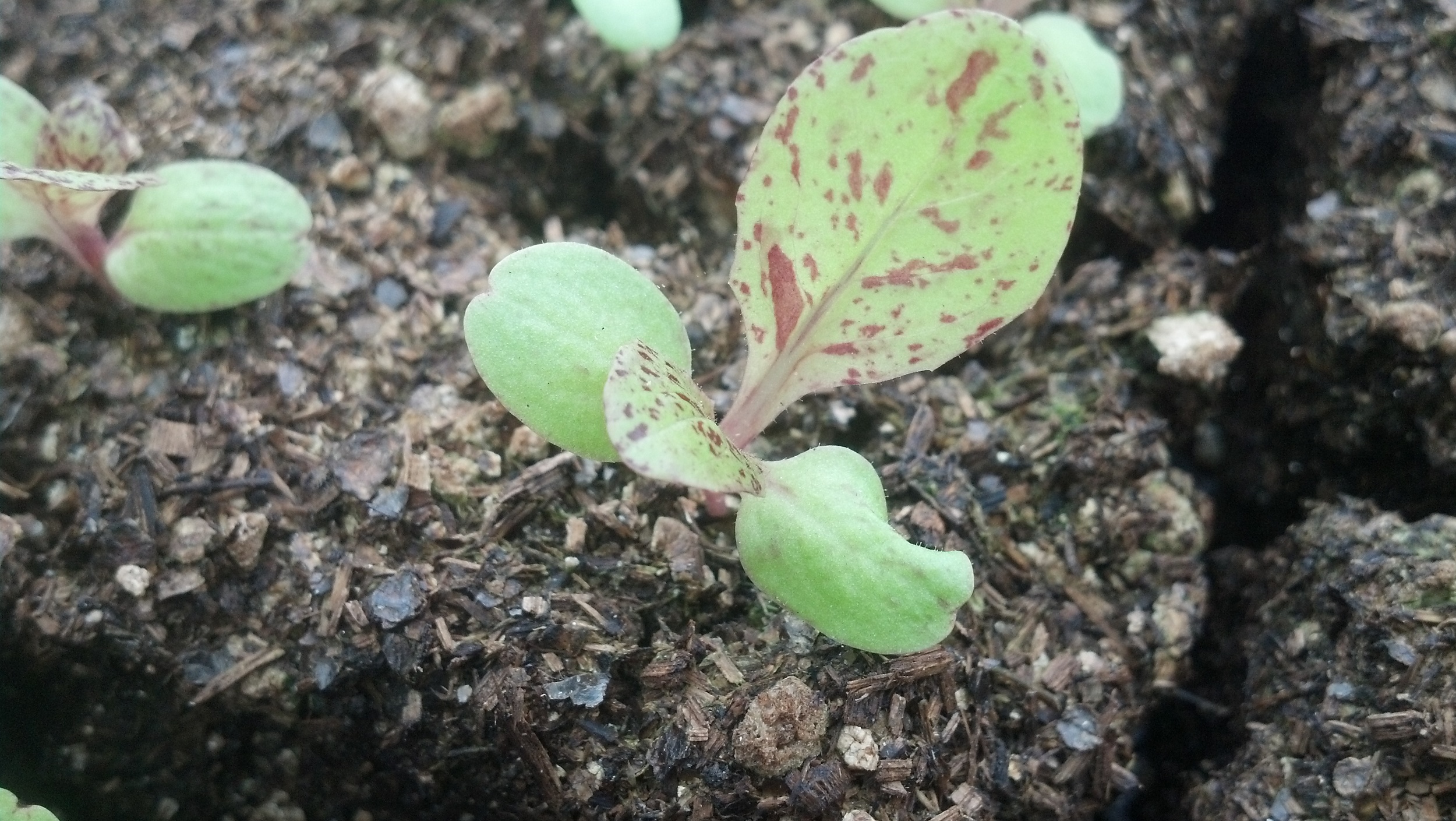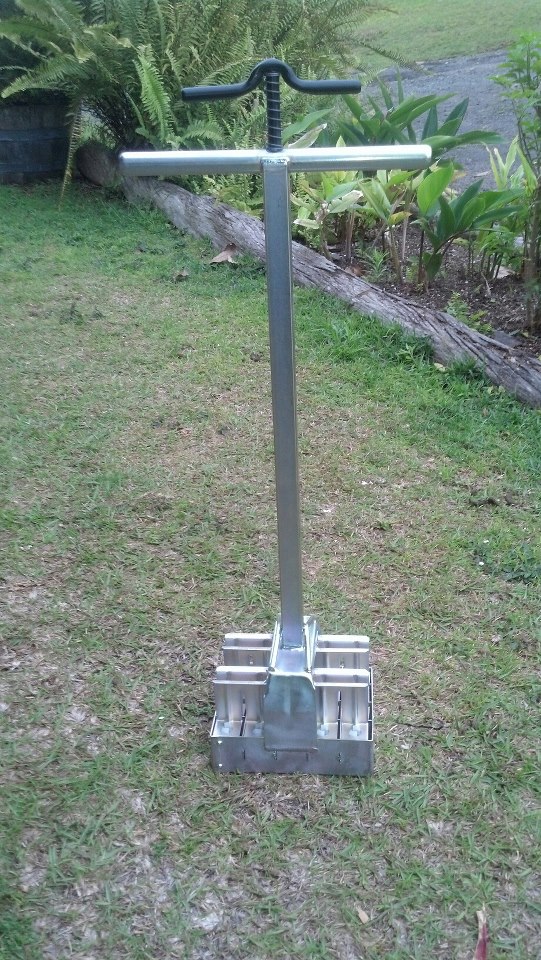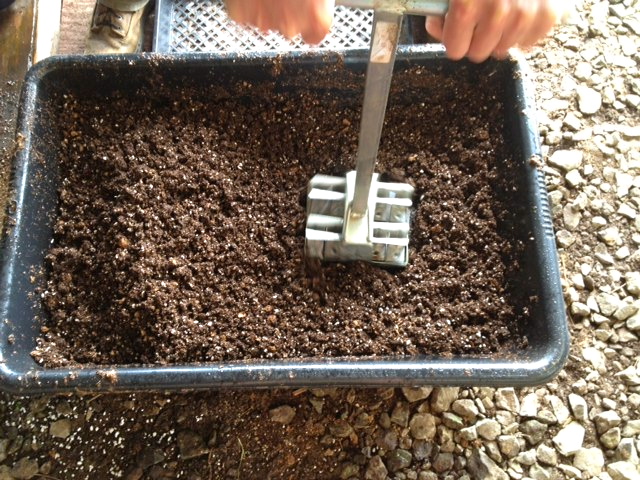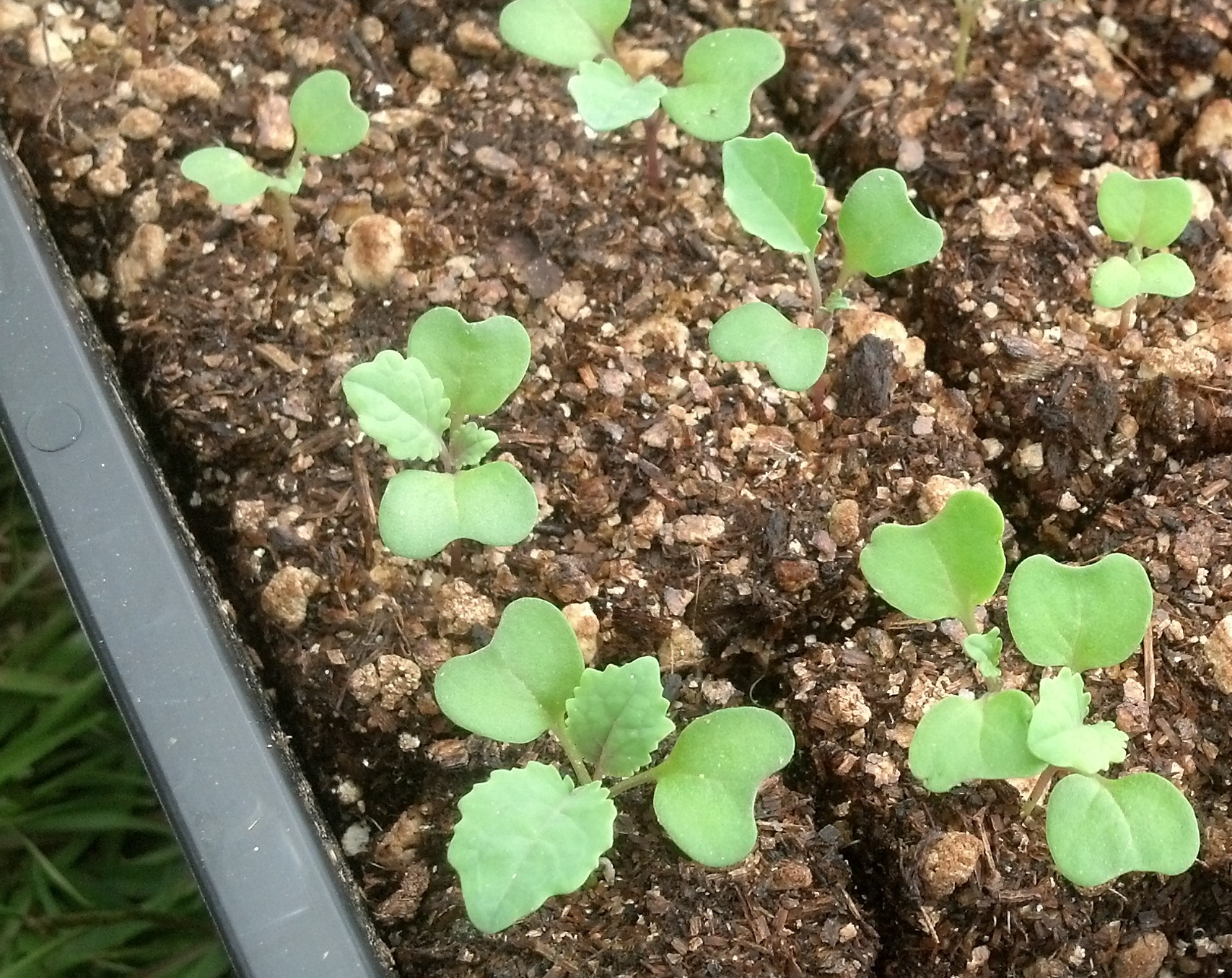Starting Seeds, or How Keiki Are Born
Mike here to explain how we start our seeds. I have other posts coming soon about the next steps, but this is how to plant starts for the many vegetables that have to begin in trays rather than in the ground.Keiki is Hawaiian for "child." What we call transplants in the midwest are called keiki out here. They are our babies. We birth them, nurture them, and watch them grow up with parental pride. Many a time my eyes have teared up seeing my babies sprout, hopeful and excited for their lives ahead. We wish nothing but the best for them, send them nothing but the best energy, and they flourish as we swell with pride. "Look what my little baby has become..."
This is a tool called a soil blocker. You can buy one here. For a small home garden, you could use plug trays instead. However, it is a good investment for someone who is really committed to gardening/farming. It is also much better than plug trays for a number of reasons including sustainability because plug trays need to be replaced more often.
A soil blocker works by pressing it down onto moistened planting mix so the cube molds fill up and packs down a bit. Then you take a finger or trowel or other flat thing and scrape off the excess and position the tool over an open flat tray. When you squeeze the handle trigger, it forces a plunger plate down and pushes out 20 one-inch cubes of soil.
The plate that forces it out has what's called a dibbler attached to it, and it creates depressions in the block called - you guessed it - dibbles. Into these dibbles go the seeds, one or two in each depending on the crop and the germination rate (what % of seeds come up.) One of the strengths of the soil blocker is that it creates these sheltered areas for seeds, so you can actually just leave the seeds on the surface of the soil.
Seeds for the most part need just water in order to germinate. But once the first root sticks its toes into the soil and the seed gets settled and thinks to itself "All right, let's do this!" and starts letting itself unfold its seed leaves (or cotyledons) it starts needing the basics that a mature plant needs - sun, water, air, and soil. Having the seed exposed leaves it at greater risk of drying out in this critical stage, so extra care must be taken when leaving seeds on the soil surface. However, the benefits of having the seed be able to get right to business rather than have to push through soil outweigh this risk.
So the seed has its toes in the soil and has unfolded its seed leaves, which are the temporary leaves whose job is to get out there quick and start photosynthesizing. So they literally swell up with water and pop up, like a tent or hot air balloon or one of those wacky waving inflatable arm flailing tube men. They start converting that sun and soil and water into energy and breathe in CO2 and trap it in inside themselves, using the energy they made along with their own blueprint, their DNA, to unfold the first true leaf.

And this is magic. This is a miracle.






